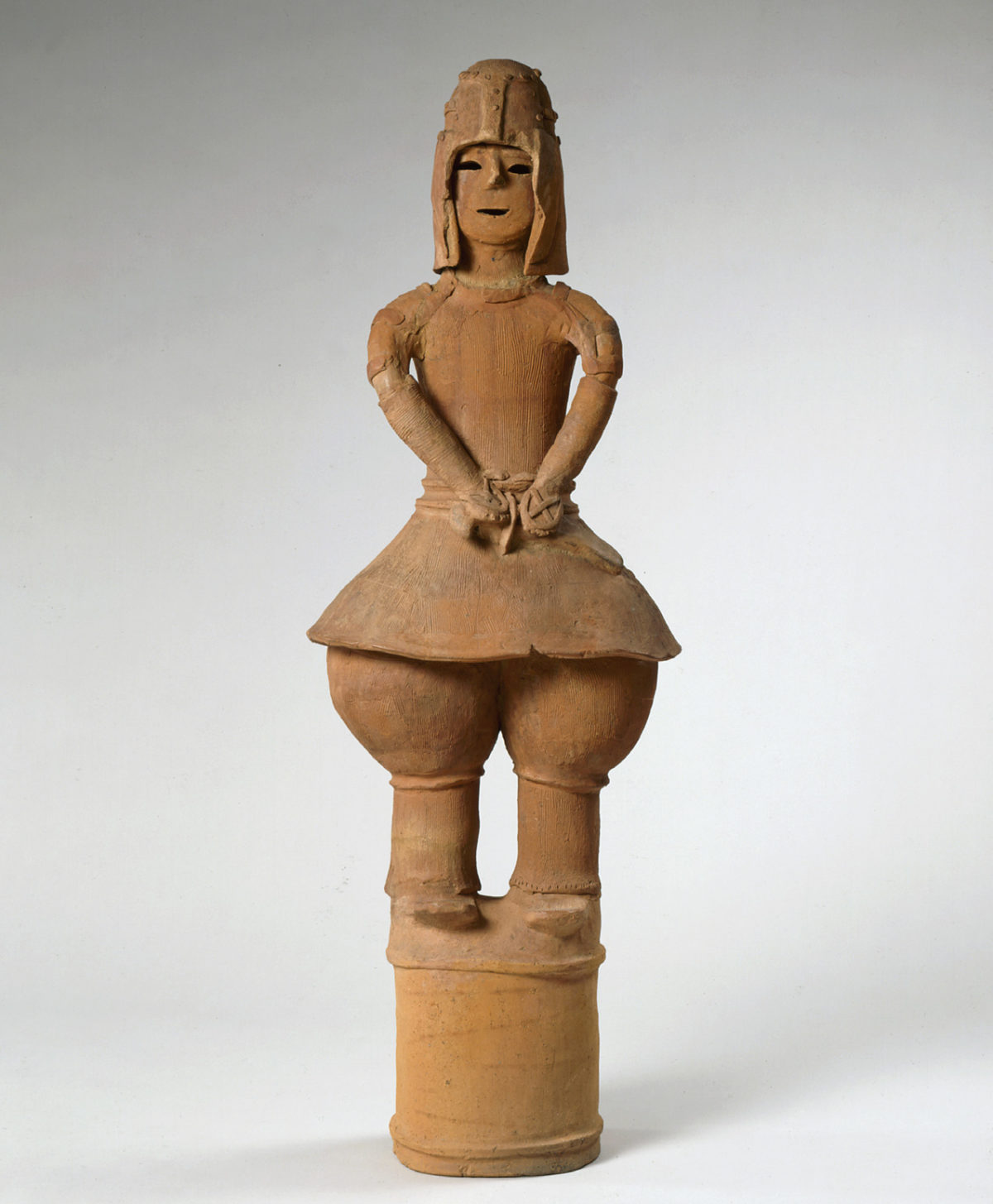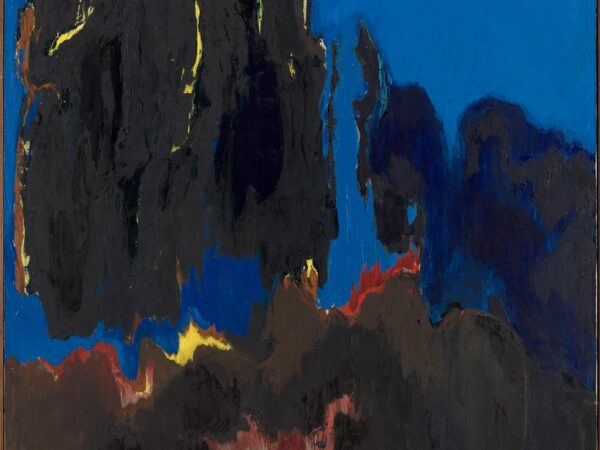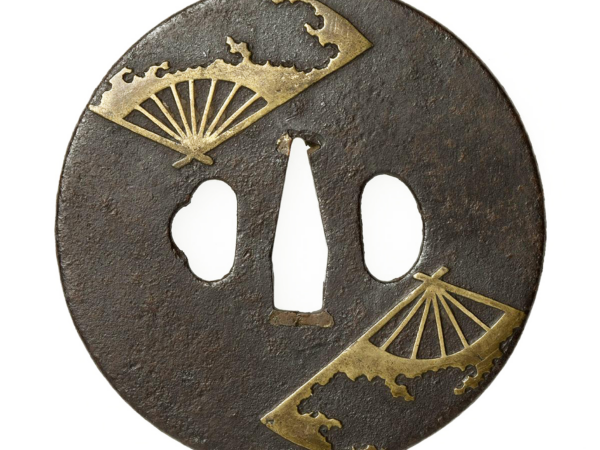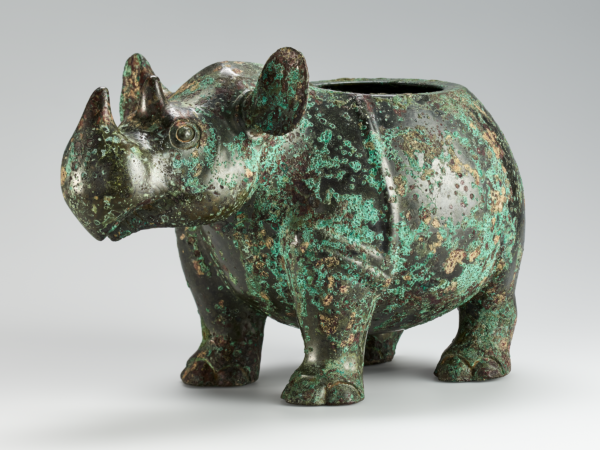Activity
Haniwa in the Form of a Warrior

Haniwa in the Form of a Warrior.
What is this object? How was it made?
This object is a haniwa (lit. “clay ring”), a type of funerary article made during the Kofun era (300–552). Many kinds of haniwa have been found, including both simple clay cylinders and more elaborate forms, such as human figures, houses, boats, and many kinds of animals. This elaborate example represents a male warrior, about four feet tall, elevated on a high, cylindrical base. Like other haniwa, it was constructed of clay, using the coil method. The small, tubular arms were made separately and attached at the shoulder.
Where was it found?
Throughout the Kofun era, enormous burial mounds called kofun (lit. “old tombs”) were constructed for powerful clan chiefs. A variety of funerary objects, including metal blades, stone jewelry, and pottery vessels, were buried within the tomb mounds. Haniwa, however, were placed not inside the tomb, but instead on top of the grave mound, a visible reminder of the deceased’s presence there.
What was the function of this object?
Several explanations have been proposed for the function of haniwa. Some scholars believe that they were used to define the perimeter of a sacred enclosure, protecting the deceased and separating his world from the space of the living. Others argue that haniwa were arranged atop the tomb in order to reenact ceremonies relating to the burial, or possibly to the next ruler’s succession. Historical sources from a slightly later period, such as the eighth century Nihon shoki, suggest that people who saw these figures standing above ancient tombs invested them with magical powers.
Warrior figures like this one provide evidence of a military class active well before the rise of the Taira and Minamoto clans in the twelfth century. The pose of this haniwa—frontal and erect, with one hand grasping the sword in readiness—suggests its role as a protector of the tomb, its inhabitant, and his successor.
What kind of costume is this figure wearing?
How does it relate to later military attire?
The soldier wears a hip-length tunic, billowing trousers tied below the knee, a riveted helmet, shoulder guards, high gauntlets, and a sword. The trousers, similar to those worn by contemporary northern horsemen of the Six Dynasties period (220–589) in China, reflect the influence on Japan during this period. The form of the costume loosely resembles later Japanese defensive armor, though it lacks the large, hinged upper-arm shields characteristic of medieval forms such as the “great armor” (oyoroi) and the lighter “corselet armor” (domaru).






